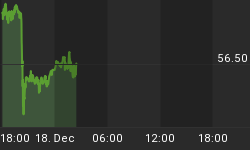
Source: www.stlouisfed.org
Why has the level of employment in the US been falling? One would think that with a growing population and supposedly an economy that is improving that more of the population would be employed. It is not the case at all. Instead, the level of civilian employment to the population as a whole has been falling since 2000. It currently sits at levels not far above the high of the 1950's and 1960's a period when it was considered fairly normal that in a household the husband worked while the wife stayed home. (Note as well the rather interesting head and shoulders top pattern that formed at the top. It projected that the civilian employment population ratio would fall to at least 59. It is currently 58.9).
When one breaks down the civilian employment population ratio by gender one discovers that male employment population ratio has been falling since the 1950's. In the 1950's the ratio was over 80%. Today it is at 65%. Female participation had been rising for years but that ratio peaked in 2000 at around 58%. Today it is under 54%. Some of the sharpest drops have been in the 16-19 age group where their employment population ratio has been almost cut in half since 2000. A check of numerous categories of the employment population ratio by gender, age and race shows that almost all are in decline.
The civilian labour force has grown by some 16 million since 2000. Civilian employment however has only grown by about 9 million. Not only has civilian employment failed to keep up with the growth in the labour force it is lower by roughly three million from where it was at the peak in 2007. The civilian labour force participation rate was at its peak in 1999 at over 67%. Today it is at 63%. It too has been falling since 2000. A chart of the civilian labour force participation rate is below.

Source: www.stlouisfed.org
A declining participation rate has the perverse effect of actually lowering the headline unemployment rate. What that means is that as fewer people actually participate in the labour force it helps lower unemployment. That doesn't mean they are not unemployed it just means they are not counted. Shadow Stats www.shadowstats.com has long pointed out that the real US unemployment rate is more like 23% rather than the headline unemployment (U3) of 6.7% that everyone focuses on. The Bureau of Labour Statistics reports two numbers: U3 the headline unemployment rate and U6 (currently 12.7%) that includes discouraged workers under one year and the marginally employed who want a full-time position. The Shadow Stats number reflects the methodology that was adjusted in 1994 by the Clinton administration to exclude discouraged workers unemployed for over one year. Seems if that you just can't find a job even if you want one you are just not considered a part of the labour force any longer. In 2000, the Shadow Stats unemployment number stood at 10.5% vs. 23.2% today and is the only category that has gone up since 2010 when both U3 and U6 unemployment peaked.

Source: www.shadowstats.com
So where have all the jobs gone? Millions of jobs have been offshored to India, China and Latin America. After all why pay someone $50,000 a year in the US when someone in India will do it for $20,000. Wages have been overall flat to declining since the 1990's. Others have lost out to technology. Quite simply a human cannot compete with a robot even though that may not be the main technology reason that jobs have been lost. While all of the above are US numbers the situation is quite similar in Canada.
Is it any wonder then that the US (and Canadian) middle class is getting squeezed and disappearing and the lower or underclass is growing. Yet the officials claim that the economy is growing and unemployment is falling. It seems that the world is viewed primarily through rose coloured glasses as the disappearing jobs just become invisible. Could all of this come back to haunt us at some point?















